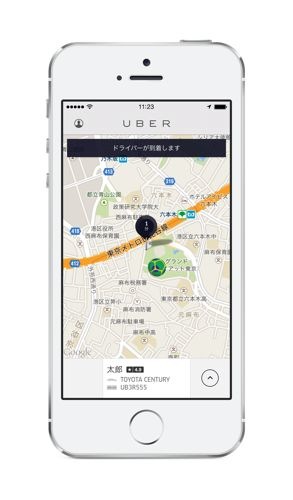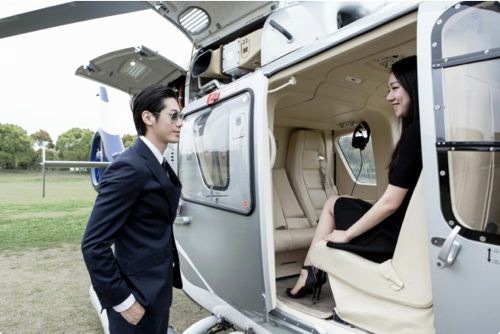How Uber thinks locally to expand globally
Asia Pacific's diverse markets mean a localization strategy is an imperative part of Uber's marketing and expansion plans for the region.
Asia Pacific's diverse markets mean a localization strategy is an imperative part of Uber's marketing and expansion plans for the region.
Localization is a key ingredient of Uber’s Asia Pacific (APAC) marketing strategy as it battles to stay ahead of regional competition, a company executive has told delegates at ClickZ Live Singapore.
Western technology giants that have failed in the region previously have often implemented Western business models, instead of thinking and hiring locally, said Vidit Agrawal, Uber’s Singapore-based strategic finance manager for APAC.
“Asia is a very interesting market for us and it’s amazing that a lot of people don’t understand that this is a massive continent,” said Agrawal. “The APAC region has so many different countries, so many different cultures, each country is different, laws are different, the media is different, the people are different and the requirements are different… so we customize our product and then customize our marketing to the needs of each city,” he said.
Competition is particularly fierce in the China market, where Uber has a prescence in 18 cities.
Earlier this year, two of China’s biggest technology competitors, Tencent and Alibaba, joined forces in a US$6 billion merger forming Didi Kuaidi, to counter Uber’s move into the country. As a result, China has an enormous amount of money in the online taxi-hailing market, as everyone tries to recruit new users.
To counter this competition, Uber segments users into groups, such as the 18-35 user group, the large expatriate group in Shanghai, cities beyond tier-one and tier-two, and localizes strategies for each one. “It’s not just marketing to China. It’s marketing to a city. You break it down to a city.”
A partnership with Chinese search engine giant Baidu also gives Uber access to a network of apps and websites but it remains limited by Tencent’s blocking of its WeChat account – China’s most popular social app.
Here, Agrawal outlines the five ways Uber has developed its marketing strategy for the APAC region:
An important lesson is to brand your product and tell your story, said Agrawal.
“As a company, when we started we probably weren’t that great at telling our story and even before we started telling it, the media jumped onto us and there was a lot of negative stuff,” he said. Now, five years on, with exponential growth into 63 countries, across more than 300 cities, (around 20 percent of them in APAC), it has become increasingly important for Uber to tell that story.
Part of that is having a more open strategy to engage media. Uber has also taken a lead from Apple’s Steve Jobs: to keep it simple.
“What is Uber? Uber is a very simple app, that’s all we are, that connects a rider – which is you, to a driver partner. You request a driver, you take the ride, and you pay the driver.”
 2. Sex is in the product, not the marketing
2. Sex is in the product, not the marketingWithout the right products, a business will fail, said Agrawal. That means giving clients choice. Uber invests heavily in technology as a way to maintain its competitive edge.
UberPOOL, for example, has been launched in several global markets, including most recently, Bangalore. The car-pooling service means cheaper fares for passengers and, in theory, less congested roads.
Then there are autonomous cars. “This technology is coming, and it’s coming fast and as a company we realized how important it is to be ahead of technology,” said Agrawal.
Innovation doesn’t stop at cars. The business has launched UberBOATS in Istanbul and earlier this year, UberCHOPPER in Shanghai.

Beyond transport, Uber is testing food and other delivery services.
“These are very tough markets and I don’t think any start up in the world has nailed the food delivery business,” said Agrawal. “But for us, because we have the network, because we have the bandwidth to do it, we can test these products, we can make mistakes and we can learn.”
Localization begins with hiring local people, said Agrawal. “We understand that India is a market which requires its own people, you need to think like an Indian. And it’s the same for China. Being local is very important and as a company we understand and respect that,” he said.
Uber offers different products for different cities, such as UberAUTO, which was launched in New Delhi in April to accommodate auto-rickshaw users.
However localization goes beyond services, said Agrawal. It might include cash payments for some emerging markets where credit cards are not feasible, or in China, where Uber has partnered with Alibaba’s Alipay system – the preferred payment method of Chinese consumers.

“We realized that all you have to do, is make your user experience your product once, and he will become your sales guy, your marketer,” said Agrawal.
Data
Rather than spending big on media campaigns, Uber looks to growth hacking. Local markets such as India do require some forms of traditional advertising, where print media is still strong, and banners, but generally Uber avoids this.
Instead Uber uses data to better understand user behavior, what products consumers like, at what times they are riding, which parts of the city they live in, and then targeting users with marketing they will be more receptive to.
For a market like India, it will start by reaching out to the techies and then the 18-35 group. Then marketing will differ according to city size.
“When you start going to smaller and smaller cities, a credit card may not work and you might have to think of cash options,” he said. “The offering has to be different, the approach to people has to be different, even the celebrities are very different.”
In India, Uber also develops partnerships and events around the cricket, “because that’s the pulse of the country.”
Word of Mouth
Uber claims more than 95 percent of its riders have learnt about Uber from other riders, and that includes groups that are outside of the digital realm such as older demographics.
Referrals
A referral reward system for first time riders is also employed for some markets.
Influencers and celebrities
When using influencers or celebrities, use the right people, Agrawal said. For example, when launching in a new market, Uber gets a local celebrity to be rider zero for that city. This brings in local media and events around that. Influencers and celebrities don’t need to be paid for their endorsements either if value can be achieved for both parties. For Britney Spears, that was the hype generated around the launch of her Pretty Girls album debut in May in specially kitted out UberSUVs in Los Angeles.
.@britneyspears Thanks for the free #UBER and swag! #PrettyGirls
Leave a Reply
You must be logged in to post a comment.